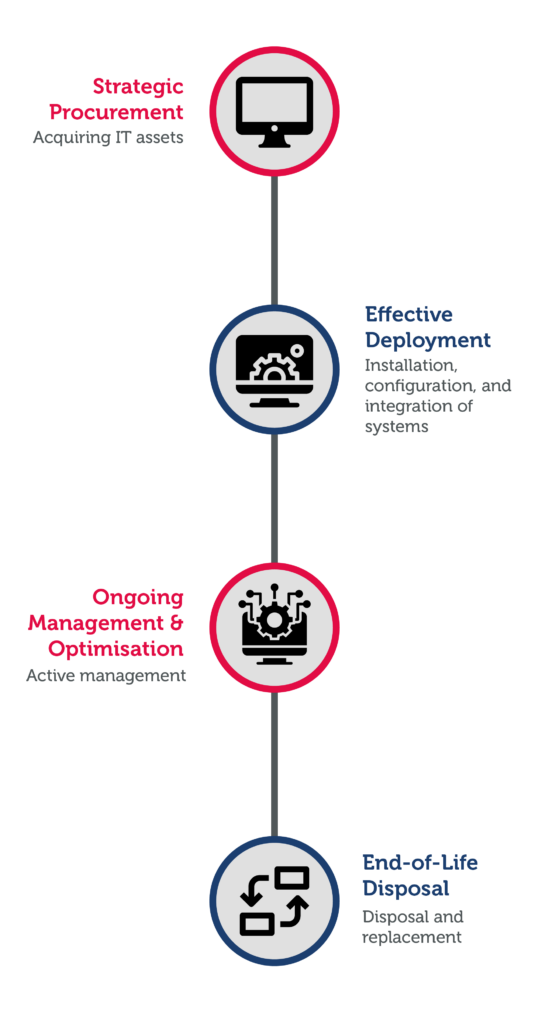Efficient management of IT assets from acquisition to disposal is pivotal for businesses aiming to maximise technology investments and reduce costs. This guide outlines the essential steps in the lifecycle of IT assets, ensuring optimal performance and value retention throughout their usage.

Strategic Procurement
The journey begins with strategic procurement, where the focus is on acquiring IT assets that align with the business’s long-term goals and technological requirements. This phase involves careful planning, selection based on performance reviews, and negotiation of terms that favour lifecycle value rather than just upfront cost.
Effective Deployment
Once acquired, the proper deployment of IT assets is crucial. This involves installation, configuration, and integration of systems into the business workflow. Effective deployment maximises operational efficiency and sets the stage for ongoing asset management, including tracking and maintenance.
Ongoing Management and Optimisation
Active management of IT assets involves continuous monitoring and maintenance to ensure they function optimally. Regular updates, security patches, and performance audits help prolong the life of these assets and enhance their efficiency. Additionally, training staff to utilise technology effectively can lead to increased productivity.
End-of-Life Disposal
The final stage of the IT asset lifecycle focuses on disposal and replacement. Responsible IT disposal involves ensuring that all data is securely erased and that the disposal process complies with environmental regulations. Recycling and refurbishing parts, where possible, can also provide financial returns and contribute to sustainability efforts.
Managing the lifecycle of IT assets effectively is a complex, yet rewarding process that can significantly impact a business’s bottom line and operational efficiency. By adhering to these guidelines, companies can ensure that they not only extend the life of their IT investments but also maintain compliance and support environmental sustainability.
Action Steps
Businesses should regularly review and adapt their IT asset management strategies to keep pace with technological advancements and changes in regulatory requirements.
Conducting periodic audits and leveraging expert consultancy can help in identifying areas for improvement and ensuring that the IT asset lifecycle is managed effectively.



